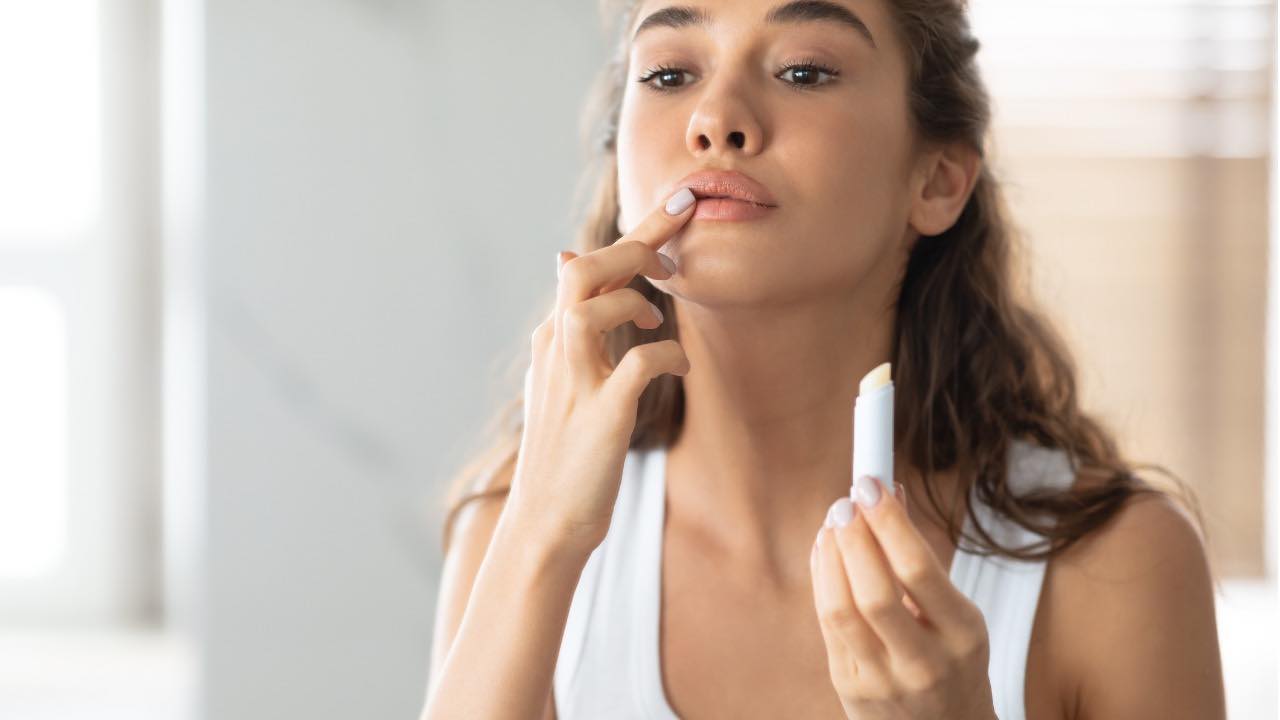A focus on lips
In OTC
Follow this topic
Bookmark
Record learning outcomes
Cold air and wind can have an adverse effect on the lips, stripping them of moisture, and making them dry, chapped, and prone to flaking. Lips are especially vulnerable, not only because they are often exposed to the elements, but with just three to five cellular layers, they are thin compared to up to 16 layers in facial skin. They also lack the sebaceous oil glands found elsewhere in the skin.
This sets them up for problems as the weather gets colder and there is less humidity. To make things worse, the combination of cold outdoor air and central heating dehydrates the lips further.
Other factors that can cause dry or chapped lips include:
- Eczema/contact dermatitis
- Actinic cheilitis (a precancerous condition) that turns one or both lips dry and scaly, although the lower lip is more likely to be affected
- Dermatillomania (skin picking disorder)
- Candida or Staphylococcus infections
- Mineral/vitamin deficiency such as iron or vitamin B
- Herpes virus
- Drugs such as isotretinoin
- Allergies
- Angioedema.
When it comes to advice, it helps to establish the cause. Any concerns should be referred to a doctor or dentist, but we all need to:
- Moisturise lips regularly, reapplying balm throughout the day and before bed
- Stay hydrated by drinking plenty of water. Less water means less saliva, which can make the lips feel dry
- Avoid licking the lips. It might feel soothing, but actually dries them out even more
- Exfoliate gently to remove any dry flaky skin from the surface of the lips. Although this will not solve the problem, it will reduce scale. Be gentle. Harsh exfoliation will disrupt the protective barrier layer
- Avoid picking! This is not exfoliation and although it is tempting to rip off an annoying flake, it just irritates further
- Reapply balm after eating and drinking. Grazers will go through lip balm more quickly than people who eat less frequently. Select a balm according to the consistency preferred. Microcrystalline wax balms are firmer than those made with carnauba wax. Avoid dipping unwashed fingers in a container before smearing balm on the lips. This is a sure fire way to spread germs. A tube applicator is much more convenient, hygienic, and less messy
- Choose a balm that is fragrance free, hypoallergenic and contains sun protection factors (SPF) that block both UVB and UVA rays. Select balms with humectant ingredients like hyaluronic acid, which draw moisture into the lips
- Keep in mind that some foods, such as spicy meals, may irritate the lips.
The right balm should not make the lips sore. Many people mistake discomfort such as burning, stinging, or tingling as a sign the product is working, but that is not always the case. Some lip balms contain ingredients that could cause an allergic reaction (e.g lanolin). Components such as menthol, phenol or salicylic acid can make the lips more dry.
For many people, their balm of choice is Vaseline. It is an occlusive, so traps moisture and seals it in, making it a great moisturiser before bed, although it can feel a bit greasy during the day. Vaseline Lip Therapy products are preferable. They contain more chemicals, but are less greasy and contain soothing ingredients. However, remember, petroleum-based products should be avoided in people undergoing oxygen therapy.
There are hundreds of balms available, but the ideal one should offer protection against the elements, hydrate the lips and seal in moisture, thus acting as a barrier against the cold and preventing potential problems.
www.smilerevolutiongrowthhub.com/our-work/fit-lip/

